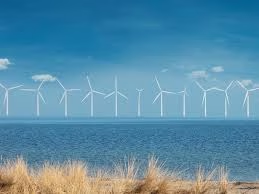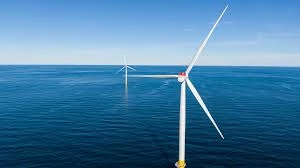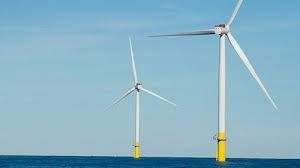Construction on the 2.6-gigawatt (GW) Coastal Virginia Offshore Wind (CVOW) project, set to become the largest offshore wind farm in U.S. federal waters, is progressing on schedule for completion by late 2026. The Dominion Energy initiative has achieved significant construction milestones, but its total estimated capital cost has seen a series of increases, most recently reaching approximately $11.2 billion as of November 2025, largely due to U.S. federal tariffs on imported materials.
On Schedule and Making Headway
The CVOW project, located 27 miles off the Virginia Beach coastline, is approximately 66% complete. Onshore construction for transmission infrastructure began in late 2023, with offshore construction commencing in early 2024.
Key milestones achieved to date include:
- All 176 monopile foundations have been installed. Monopiles are single vertical steel cylinders that serve as the base for the turbines.
- The first of three offshore substations has arrived at the Portsmouth Marine Terminal, with its jacket foundation already installed.
- The first turbine is expected to be installed in November 2025, with first power generation targeted for the first quarter of 2026.
- Export cable laying began in October 2024, with DEME and Prysmian serving as the balance of plant contractors.
The project remains on track for full commercial operation by the end of 2026, and once operational, its 176 Siemens Gamesa 14 MW turbines will provide zero-carbon energy to as many as 660,000 homes at peak output.
The “Charybdis” and Regulatory Support
A key asset for the project is the Charybdis, the first-ever U.S.-built, Jones Act-compliant wind turbine installation vessel (WTIV). The vessel arrived in Portsmouth in September 2025 and is set to begin loading and installing turbines in November. This vessel is instrumental in maintaining the project’s aggressive schedule.
The project has received robust bipartisan support and all necessary federal approvals, including a Right of Way grant from the U.S. Bureau of Ocean Energy Management (BOEM) and a U.S. waters permit from the U.S. Army Corps of Engineers, helping it avoid the delays that have plagued some other U.S. offshore wind ventures.

A History of Cost Increases
Despite strong operational progress, the project’s financial landscape has evolved significantly since its initial budget was set. The total estimated capital cost has risen multiple times. From an initial estimate of approximately $7.8 billion to the current $11.2 billion.
- November 2021: Initial budget submitted to the Virginia State Corporation Commission (SCC) was approximately$9.8 billion.
- February 2025: Costs increased by 9% to approximately $10.7 billion, primarily due to higher network upgrade and onshore electrical interconnection costs assigned by PJM, the regional electric grid operator.
- August 2025: The estimate was updated to approximately $10.9 billion, incorporating the initial anticipated impact of rising U.S. federal tariffs on imported components.
- November 2025: The latest increase was announced in Dominion’s Q3 2025 results, raising the total cost to approximately $11.2 billion. This $443 million increase from the previous estimate reflects the full impact of newly imposed federal tariffs on imports.
Under cost-sharing arrangements, 50% of total project costs above $10.3 billion are borne by the project owners (Dominion and its partner Stonepeak), protecting customers from the full impact. The expected average impact on a typical residential customer bill over the life of the project is estimated at a modest increase of a few cents per month.
Like Dominion Energy’s project, Revolution Wind faced a challenging market environment with rising costs for materials and components.

Economic Benefits and Future Outlook
The project is a significant economic driver for the Hampton Roads area and Virginia as a whole. During construction, it has supported approximately 900 direct and indirect jobs annually. And generated millions in tax revenues and economic output. Once operational, it is expected to sustain over 1,100 local jobs annually.
Dominion Energy remains committed to the project, viewing it as an affordable and necessary source of energy to meet rapidly accelerating demand, particularly from the data center industry in the region.
Read also Construction begins on SunZia wind facility and SunZia transmission line in New Mexico
Read also GE Vernova’s Largest Ever Wind Turbine Order for SunZia Project
Largest solar park in Wisconsin completed, Badger Hollow Solar

